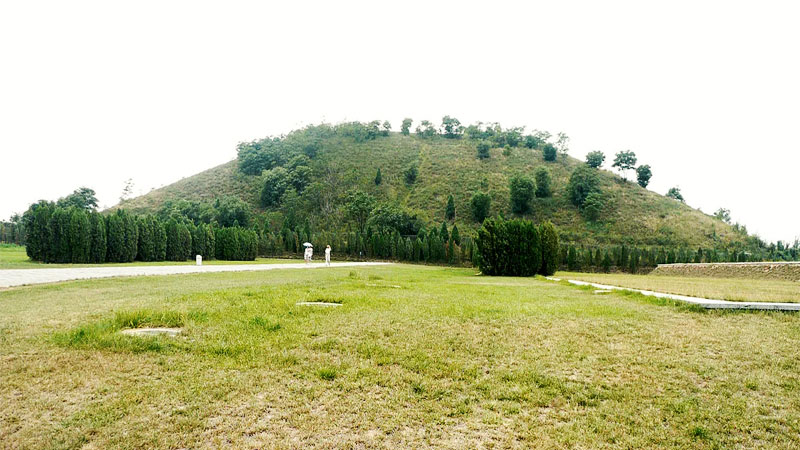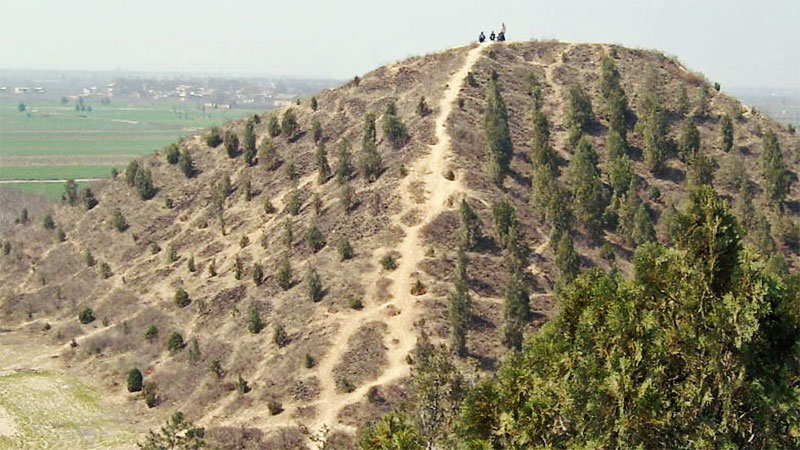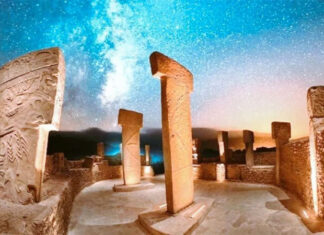100 kilometers from Xi’an, an ancient city in central China, among farms and forests, rise hundreds of pyramid-shaped mounds that have been shrouded in mystery for thousands of years.
The Chinese pyramids became known worldwide only in 1912, when the American travel agent Fred Meyer Schroder was traveling through the province of Shaanxi with a guide and recorded a full description in his diary, noting that he had seen a giant pyramid approximately 300 meters high and 450 meters on each side, surrounded by several smaller pyramids.
To put things in perspective, the Great Pyramid of Xi’an is almost twice the size of the Great Pyramid of Egypt.
Schroder’s guide explained that the pyramids he found were the subject of local legends and that their history could be found in ancient monastic documents.
In 2000, Chinese authorities stated that there were about 400 pyramids north of Xi’an and excavation of many of the other sites revealed pyramid-shaped mausoleums covered by vegetation.
In these tombs are found the ancient members of China’s royalty, who intended to rest for all eternity undisturbed.
Most pyramids are extremely difficult to spot, camouflaged in lush mountains and hills and covered in tall grass and trees.

Very few of the structures have been opened to tourism and few archaeologists have been allowed into these areas, which are constantly patrolled by the Chinese military.
The Chinese government has given simple explanations as to why no one is allowed inside: Archaeologists and tourists can damage the artifacts.
Authorities say they are waiting until technology has advanced enough to properly excavate the pyramids and their precious contents.
The Ancient Astronaut Theory, advocated by Erich von Däniken, believes that the original architects could have been extraterrestrials who visited our planet thousands of years ago, and the Chinese government could be hiding their existence from the rest of the world.
The Xianyang Pyramid is located near Mount Baigong, in the western province of Qinghai, and its construction is surrounded by legends and stories. Residents of the region believe that their ancestors lived in the pyramid and that the place was used as a landing pad for extraterrestrial ships.
Alignment with the Stars

Through modern technology, researchers were able to map the location of dozens of Xi’an pyramids and were amazed at how these mausoleums are in precise astrological alignment.
Researcher Giulio Magli, using satellite images, unravel the relationship between the mausoleums of emperors and members of the Han Chinese royal family that are scattered around the ancient city of Xi’an.
In this region, specialists found more than 40 pyramids that served to bury, under an artificial hill, members of the Chinese dynasty.
According to Magli, the structure’s style is inspired by monuments such as the great mausoleums of China’s first emperor, Qin ShiHuang.
Like the pyramids in Egypt, Chinese emperors aligned their burial mounds to the North, East, South and West. The attention to the cardinal points is understandable for researchers, who consider historical beliefs: Chinese emperors believed that their power came straight from the heavens.
Although most of the monuments are positioned according to the cardinal directions, with about half of them aligned to true north, some of the buildings are offset by as much as 14 degrees.
According to Magli, this was not human error. The explanation for this is believed to be astronomical in nature.
The effect called the Precession of the Equinoxes explains how the Earth’s rotational axis slowly shifts over long periods of time, causing the position of stars to shift in the night sky.
When these structures were being erected thousands of years ago, no bright stars were aligned with the north celestial pole, and since the only star that remains fixed in space from Earth’s point of view is the Pole Star, they aligned the pyramids accordingly with it.
A computer analysis revealed that this placement coincides with the constellation of Gemini on the spring equinox of the year 10,500 BC.


















